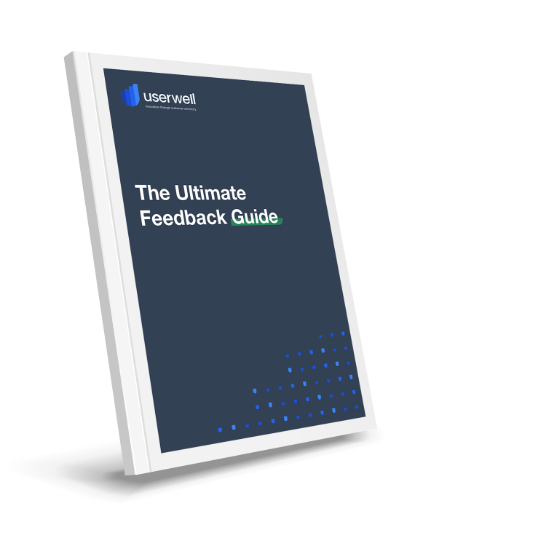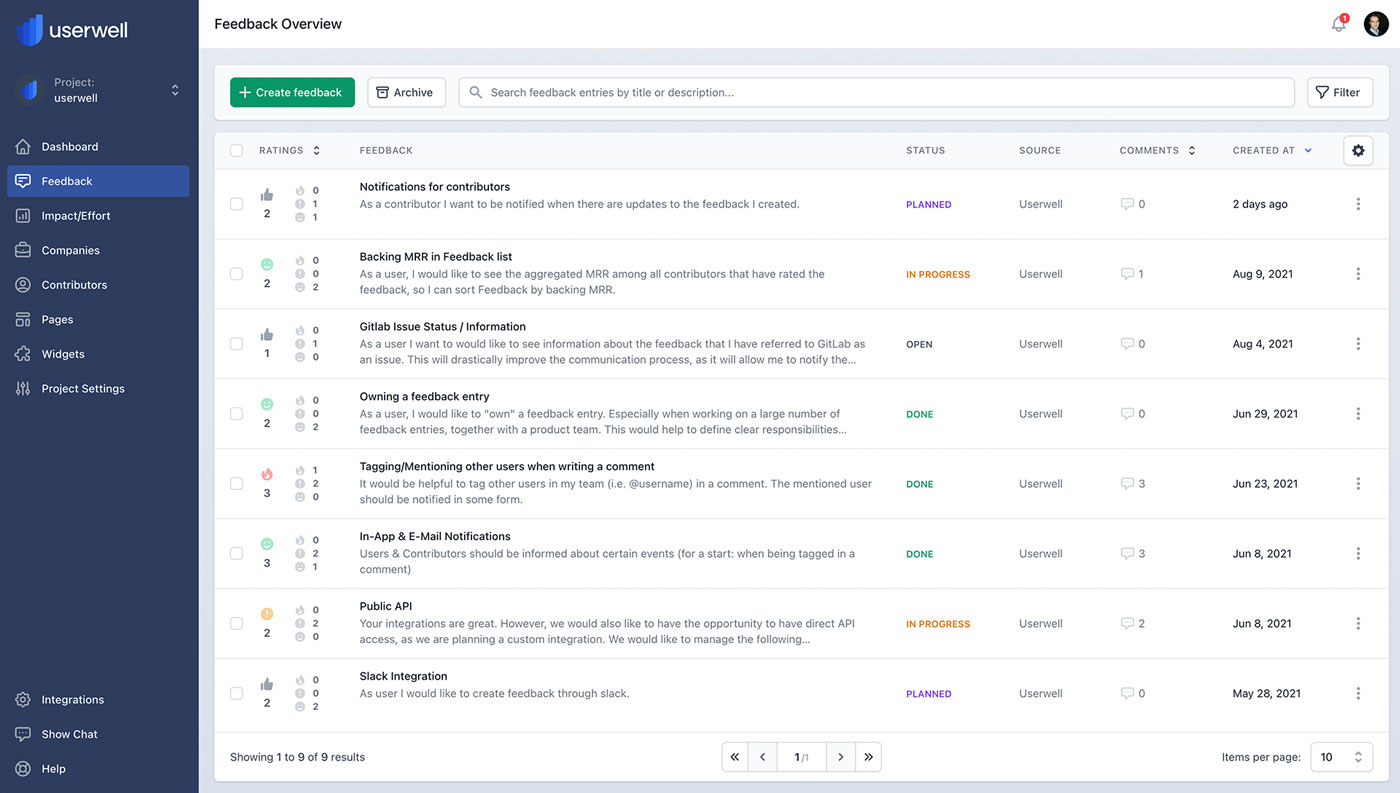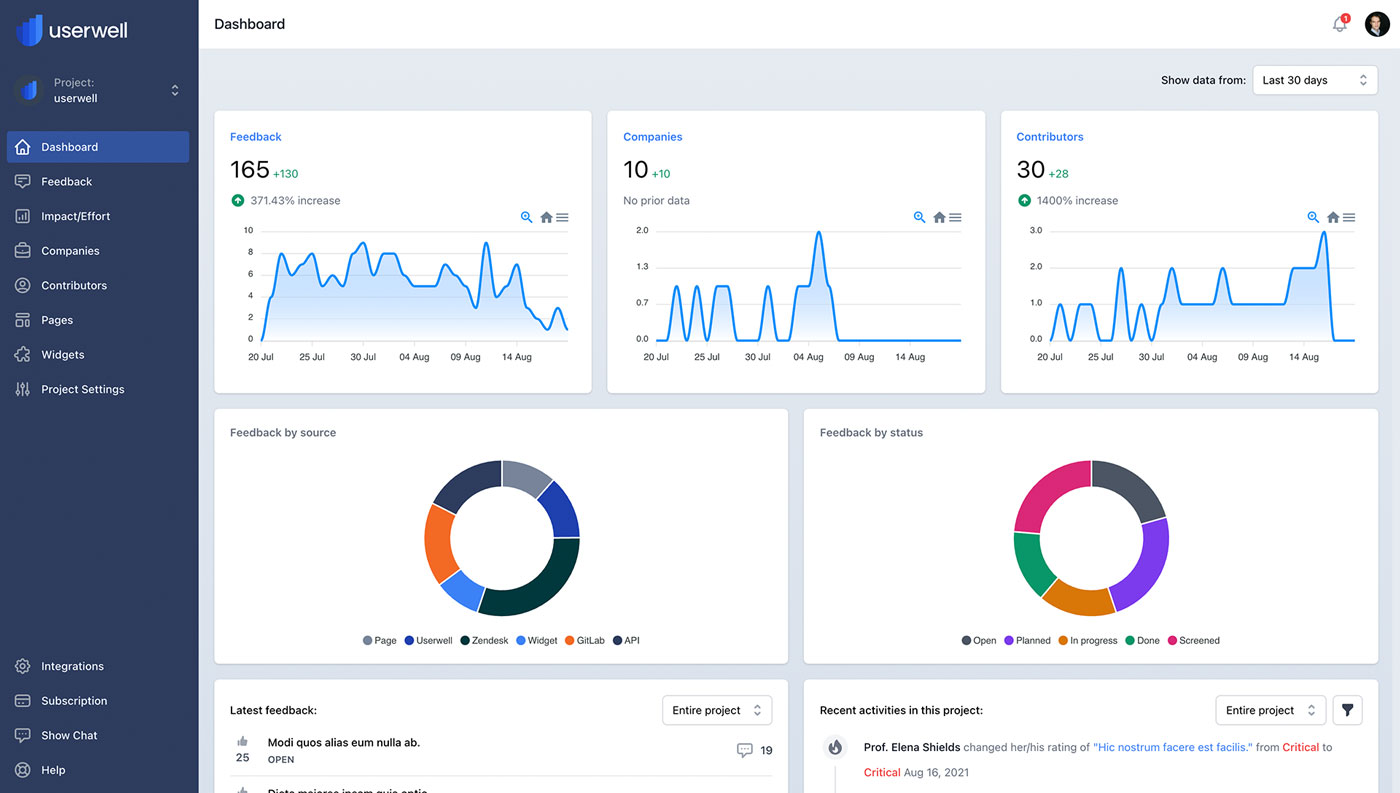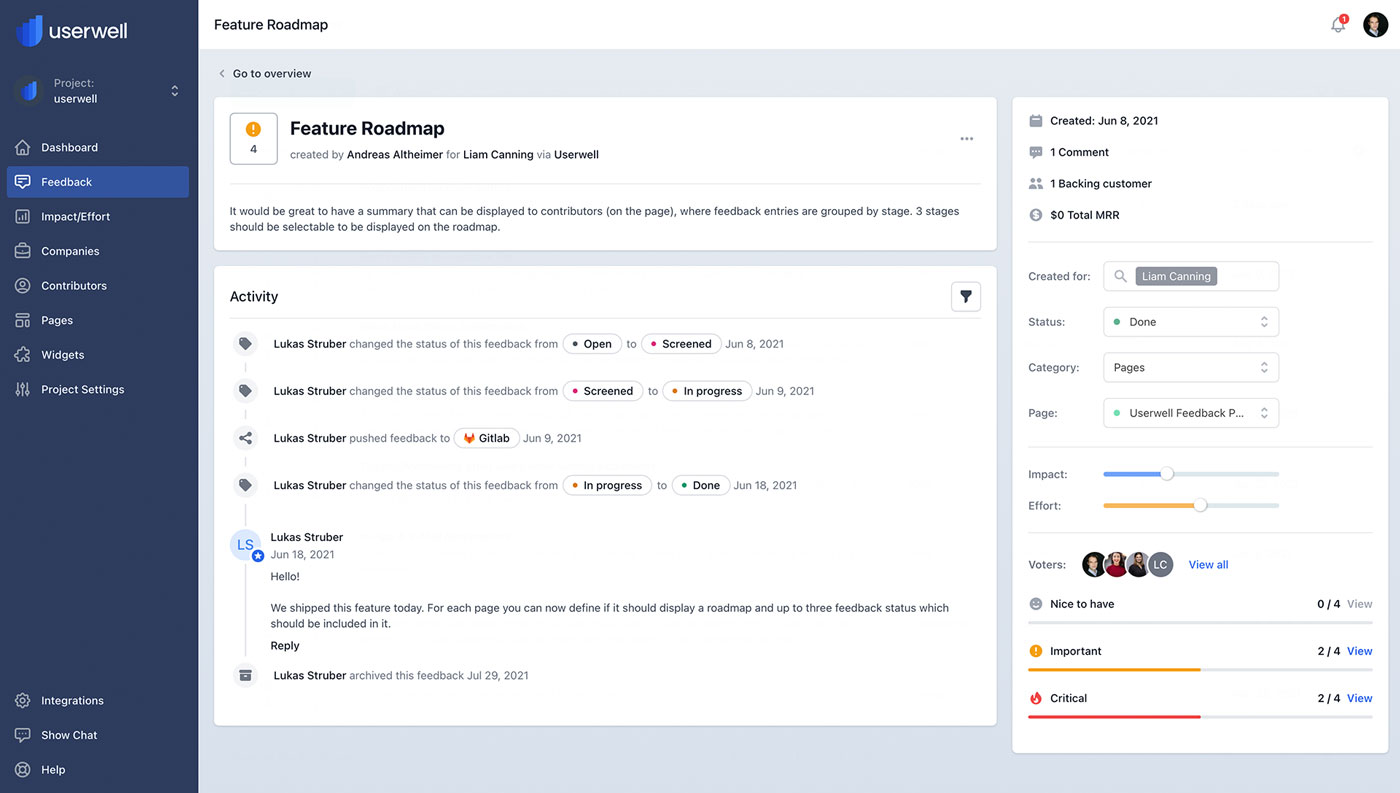Product Feedback Management Software
Gain Insights Into What Customers Really Want
Make the right product decisions by collecting and managing your user's feedback. Gather insights, engage with your customers & build a product that they love.




How It Works
It just takes a click
Integrate Into Your Workflow
Seamlessly integrate Userwell into any third-party application and optimize your product management process. Don't waste any time setting up a new workflow - just integrate Userwell into your existing one. Capture product feedback and ideas from your users and other stakeholders effortlessly.






“Since we have implemented Userwell into our feedback management process, we have reduced our customer churn by over 25%. We get great feedback for how we handle and value the ideas of our users.”




Free Guide
Learn How To Treat Feedback Properly
Are you a truly customer-centric company? Learn how to value and treat user feedback properly. Download our free guide and learn more about how you can turn feedback into further business growth, using the feedback software from userwell!







The perfect partner
Why Userwell?
-
Concierge Onboarding
- We want our customers to have a great experience from start to finish. Our customer success engineers are happy to help you with the onboarding process.
-
Premium Support
- Our software is intuitive and easy to use. However, we are always there for you in case you need a helping hand.
-
GDPR Compliance
- Our customers' privacy is important to us. To ensure that your and also your customers' data is secure all of our services are hosted in Europe.
-
Service Level Agreement
- Just like our software, our Service Level Agreement is customizable to your needs. Simply get in touch with us.
Simple Pricing, No Tricks.
Buying something that you have not seen or tested yourself can be tricky, which is why Userwell offers a 14-day free trial. Convince yourself of our product feedback software, no strings attached. Choose a plan that suits your needs. We offer monthly plans for those who like their freedom or annual plans with a 20% discount.
Build products that your customers use and love
Manage your users' feedback more efficiently. Convince yourself and start your free trial today.
Start for free





